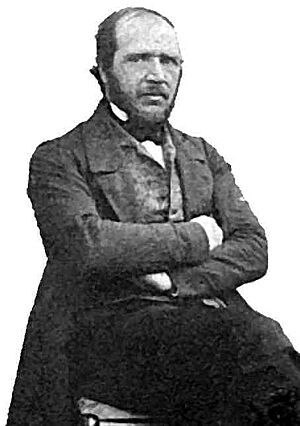Alphonse Louis Poitevin facts for kids
Alphonse Louis Poitevin (born in Conflans-sur-Anille, France, in 1819 – died there in 1882) was a clever French scientist. He was a chemist, a photographer, and an engineer. Poitevin made a big discovery about how certain materials react to light. He also invented two important ways to print pictures: photolithography and collotype.
Contents
Alphonse Poitevin: A Photography Pioneer
Alphonse Poitevin is often called a "hidden hero" of photography. His work changed how photos could be printed and shared. He helped make photography available to more people.
His Big Discovery
In the 1850s, Poitevin found something amazing. He learned that a substance called gelatin, when mixed with certain chemicals like potassium or ammonium bichromate, becomes sensitive to light. The more light that shines on this mixture, the harder it gets.
This discovery was very important. It meant that photos could be copied and printed much more easily. Before this, making many copies of a photograph was very difficult.
How His Work Changed Photography
Poitevin's discovery led to many new ways of printing pictures. His ideas helped create methods for mass production of photographs. This meant that photos could be printed in large numbers, like books or newspapers.
Many other inventors used Poitevin's ideas to create new printing processes. People like Josef Albert, Joseph Wilson Swan, Paul Pretsch, and Charles Nègre built on his work. They developed techniques such as heliogravure, photogravure, collotype, autotype, and carbon print. These methods are still important in printing and art today.
See also
 In Spanish: Alphonse Poitevin para niños
In Spanish: Alphonse Poitevin para niños


